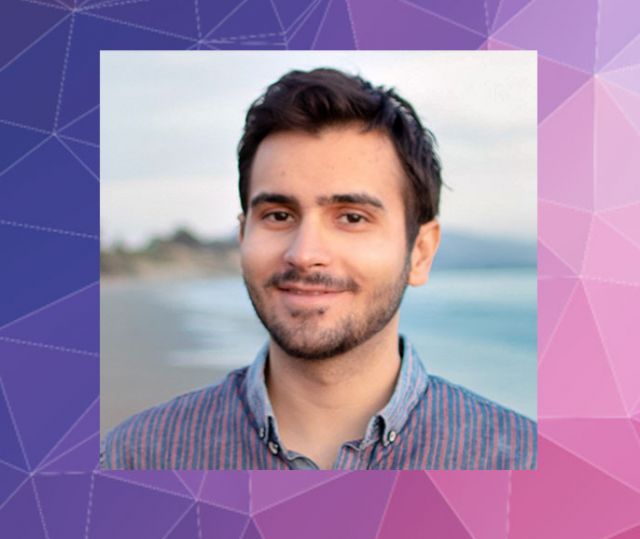Parto – DOE SCGSR Award
ECE graduate student Kamyar Parto receives a Department of Energy (DOE) Office of Science Graduate Student Research (SCGSR) research award to conduct thesis research at a DOE national laboratory

Excerpt from the The UCSB Current article – "Priority Projects"
Two UC Santa Barbara College of Engineering graduate students – Kamyar Parto, a third-year electrical and computer engineering PhD student and Eli Zoghlin, a sixth-year materials PhD student – were among the 65 students nationwide selected to participate in the DOE’s Office of Science Graduate Student Research (SCGSR) program. The fellowship program provides awardees with funding while they collaborate with a scientist at one of the agency’s fourteen national laboratories.
Parto was selected to study quantum light sources, an important step in the push to design small and scalable quantum computers that function at room temperatures. Co-advised by electrical and computer engineering faculty members Kaustav Banerjee and Galan Moody, Parto will work with Han Htoon in the Center for Integrated Nanotechnologies (CINT) at the Los Alamos National Laboratory in New Mexico.
“Dr. Htoon is one of the pioneers in this field, and his expertise, combined with the state-of-the-art implantation facilities, provide an ideal setting for a researcher,” said Parto, who joined the PhD program after completing the master’s program at UCSB. “The journey of my PhD has been filled with periods of self-doubt and questioning of my own methods, but this recognition has provided an immeasurable morale and motivational boost.”
Parto studies and characterizes defect complexes in transition metal dichalcogenides (TMDs) for application in quantum light generation and quantum computing. TMDs are two-dimensional (2D), atomically thin materials that show unique electrical, mechanical, and optical properties. TMDs can contain a number of structural defects in their crystal lattices, which significantly alter their properties. Studying defects allows researchers to eliminate unfavorable defects and introduce beneficial ones to realize higher-performing materials and technologies. Recently, researchers learned that some structural imperfections in TMDs can be triggered to emit a single photon, one at a time. This type of light, called quantum light, is a vital building block for quantum photonics circuits. During his project, titled “Engineering and Characterization of Quantum Defects in 2D TMDs,” Parto will engineer these defects at the atomic level and characterize their quantum light emission.
“My work aims to address one of the major bottlenecks in the field by finding the right quantum light source that can be integrated with the current photonics technology platform,” explains Parto, who received his bachelor’s degree in engineering science - electronics with a minor in computational sciences from the University of Tehran, Iran.
Results from his project could lead to the development and application of efficient and scalable sources of quantum light.
The DOE selected proposed projects that strongly align with priority mission areas of the Office of Science that have a high need for workforce development. The program is intended to strengthen the pipeline for developing a highly skilled scientific and technological workforce by providing new graduate research opportunities at DOE national laboratories. Since 2014, the SCGSR program has provided supplemental funding to nearly 800 U.S. graduate awardees from 153.
The UCSB Current – "Priority Projects" (full article)